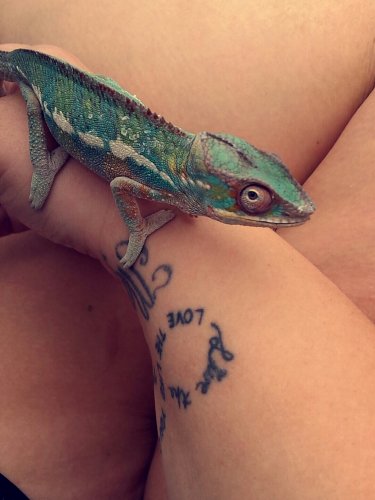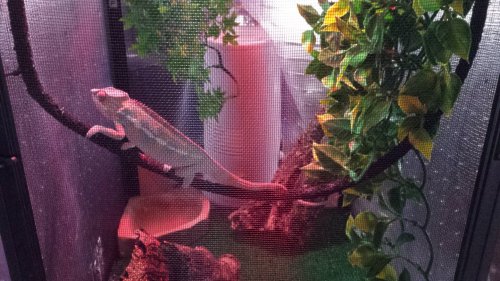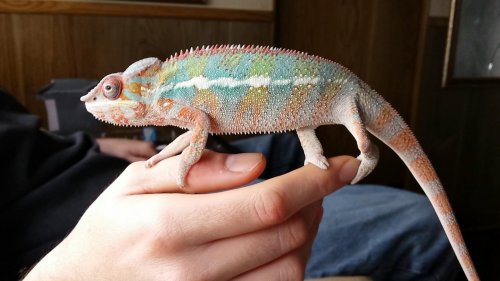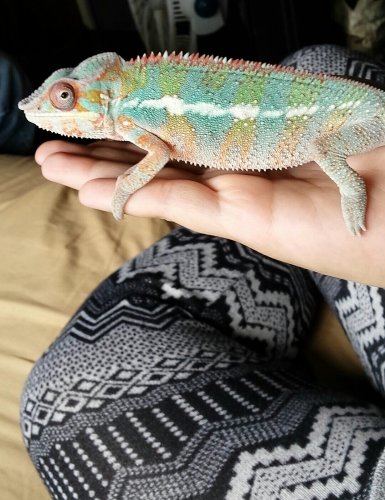sydneymarie93
New Member
I bought my first panther chameleon from Petco(I know I should of done my research, I will no longer be buying animals from them) on November 27, 2015. They told us he was a juvenile about two to three months. He's grown a lot and has shredded once. To me it seems he eats a lot! He's probably eating about 9 medium sized crickets a day. He poops regularly and moves quite a bit. He also has a regular sleep schedule. His humidity stays between 70-90 and his basking temp is 85-90 during the day and his cage doesn't drop below 75 at night.
I just wanted to know if anyone could give me more information about what exact kind he is and maybe how old he is. I haven't got an exact measurement but I'd say he's about 6 inches nose to the beginning of his tail. Also about how much I should be feeding him. Basically any advice for a beginner!! Also I call him a him but I'm not sure what his sex is lol
Thank you so much in advance!!!
I just wanted to know if anyone could give me more information about what exact kind he is and maybe how old he is. I haven't got an exact measurement but I'd say he's about 6 inches nose to the beginning of his tail. Also about how much I should be feeding him. Basically any advice for a beginner!! Also I call him a him but I'm not sure what his sex is lol
Thank you so much in advance!!!








